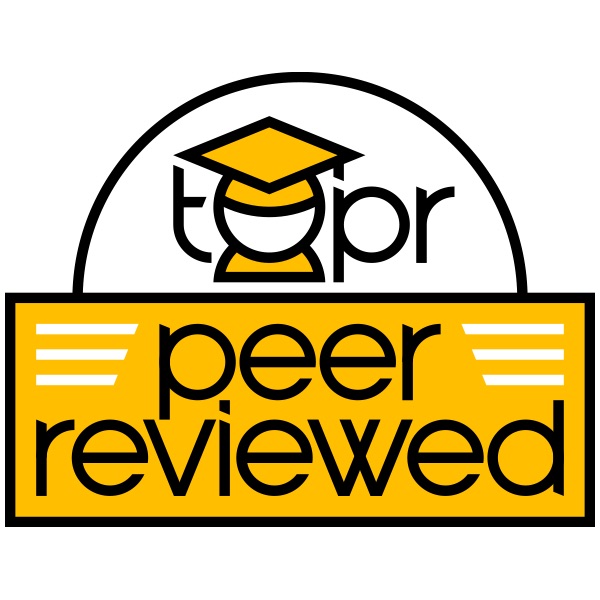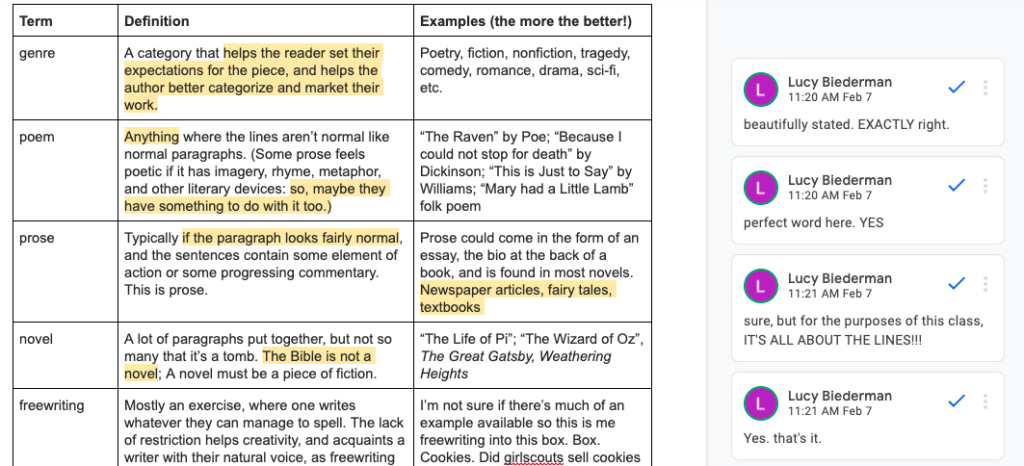Tags: Collaborative Learning, Google, Interaction, Learning Activities, Peer-Reviewed Entry, Social Presence

Description
Conrad and Donaldson note that the shift from the instructor as provider of knowledge to the “the instructor as facilitator of active student learning” began well before the introduction of online learning, with the work of John Dewey, who emphasized “diverse and meaningful peer collaboration” in learning environments. One of the ways to foster significant such collaboration online is through the deliberate use of educational tools, like Google docs, that are “aimed at connectedness” (Whiteside, Lewis, and Dikkers).
A Google doc “terms table” that students collaborate to fill out during the semester provides students an opportunity to learn in community with one another. Students supply definitions and examples of key course terms, adjusting them as needed in response to instructor feedback.
Community “plays an essential role in the effectiveness of the course in producing learning” (Darby and Lang). This formative assessment emphasizes the direct connection between community and learning, as students collaborate to provide course content that supports their peers’ learning.
Link to example artifact(s)
Students are invited to collaborate on a “terms table” that is prepopulated with the first five or six of the 20 or 30 terms they will be learning and using during the semester. As new terms are introduced during the course, students are encouraged to add definitions and examples of those terms to this collaboration. This assignment is ungraded, but students are invited to reference it during tests and quizzes, providing them motivation to make the table as comprehensive as they can—both for their own good and for one another.
Throughout the semester, I use the “comment” function in Google docs to respond to students’ definitions and examples, noting when items are unclear or incorrect, as well as highlighting particularly strong items.
By the end of the semester, students tend to reference the terms table during class discussions, taking a sense of pride in the usefulness of their collaboration.

Link to scholarly reference(s)
Conrad, R., & Donaldson, J. A. (2012). Continuing to engage the online learner: More activities and resources for creative instruction. San Francisco: Jossey-Bass.
Darby, F., & Lang, J. M. (2019). Small teaching online: Applying learning science in online classes. San Francisco, CA: Jossey-Bass.
Whiteside, A., Lewis, S., & Dikkers, A. (2014, May 19). The power of social presence for learning. Retrieved from https://er.educause.edu/articles/2014/5/the-power-of-social-presence-for-learning.
Citation
Biederman, L. (2021). Maintain a collaborative list of key course terms on google docs. In A. deNoyelles, A. Albrecht, S. Bauer, & S. Wyatt (Eds.), Teaching Online Pedagogical Repository. Orlando, FL: University of Central Florida Center for Distributed Learning. https://topr.online.ucf.edu/maintain-a-collaborative-list-of-key-course-terms-on-google-docs/?rev=5485.Post Revisions:
- July 8, 2021 @ 22:01:40 [Current Revision]
- July 8, 2021 @ 22:01:39

